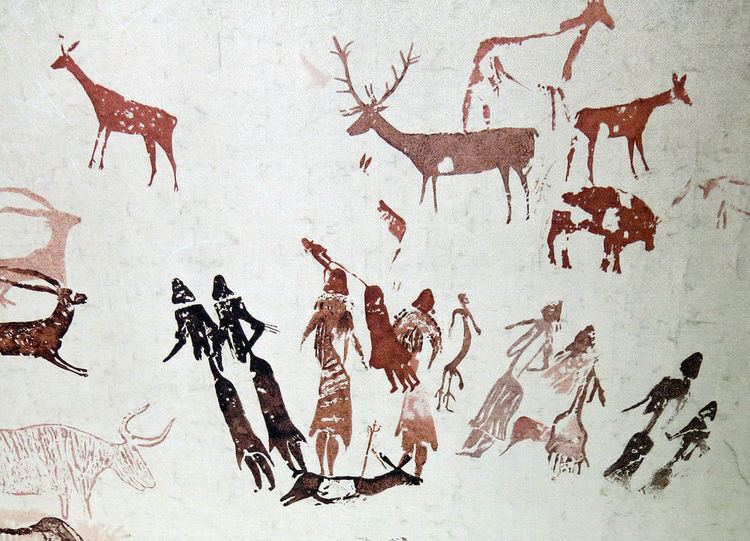Criteria iii UNESCO World Heritage Site inscription 1998 | Type Cultural Reference 874 Phone +34 672 44 59 90 | |
 | ||
UNESCO region Europe and North America Hours Closed today MondayClosedTuesdayClosedWednesdayClosedThursday10AM–1:30PM, 3–5:30PMFriday10AM–1:30PM, 3–5:30PMSaturday10AM–1:30PM, 3–5:30PMSunday10AM–3PMSuggest an edit | ||
La roca dels moros de cogul
The Roca dels Moros or Caves of El Cogul is a rock shelter containing paintings of prehistoric Levantine rock art. The site is in El Cogul, in the autonomous community of Catalonia, Spain. Since 1998 the paintings have been protected as part of a UNESCO World Heritage Site. Inscriptions in Northeastern Iberian script and in Latin alphabet indicate that the place was used as a sanctuary into Iberian and Roman times.
Contents
- La roca dels moros de cogul
- La roca dels moros del cogul pintures figuratives
- Location discovery
- The dancers of Cogul
- Conservation
- References
La roca dels moros del cogul pintures figuratives
Location, discovery
The Caves of El Cogul are a rock shelter in El Cogul in the autonomous community of Catalonia, Spain. In 1908 paintings of prehistoric Levantine rock art were discovered by the village rector, Ramon Huguet, and a report was published in the same year. The first prehistorians to study the paintings, such as Henri Breuil and Juan Cabré, took the view that Levantine rock art belonged to the palaeolithic. There is now a consensus that the paintings are post-palaeolithic, although uncertainty persists as to their date. Since 1998 the paintings have been protected as part of a UNESCO World Heritage Site (reference 874). Near the paintings is a cemetery with tombs carved into the rock. Inscriptions in Northeastern Iberian script and in Latin alphabet, one of which is an ex-voto, indicate that the caves use as a sanctuary extended to Iberian and Roman times.
The dancers of Cogul
At Roca dels Moros there are forty-five figures depicted, of which thirty-eight are painted bright red, black and dark red, seven are engraved in stone. A dance scene is the most famous of the paintings: Nine women are depicted, something new in Spanish art. Some are painted in black and others in red. They dancie around a small male figure at the center with an abnormally large phallus. Along with humans, there are several animals.
Conservation
Conservation work has been carried out on the paintings under the auspices of the Museu d'Arqueologia de Catalunya. Plans exist to build a visitors centre to interpret the site and to promote Cogul in the context of a "route of rock art", linking it to similar sites in Catalonia such as Abrics de l’Ermita at Ulldecona.
